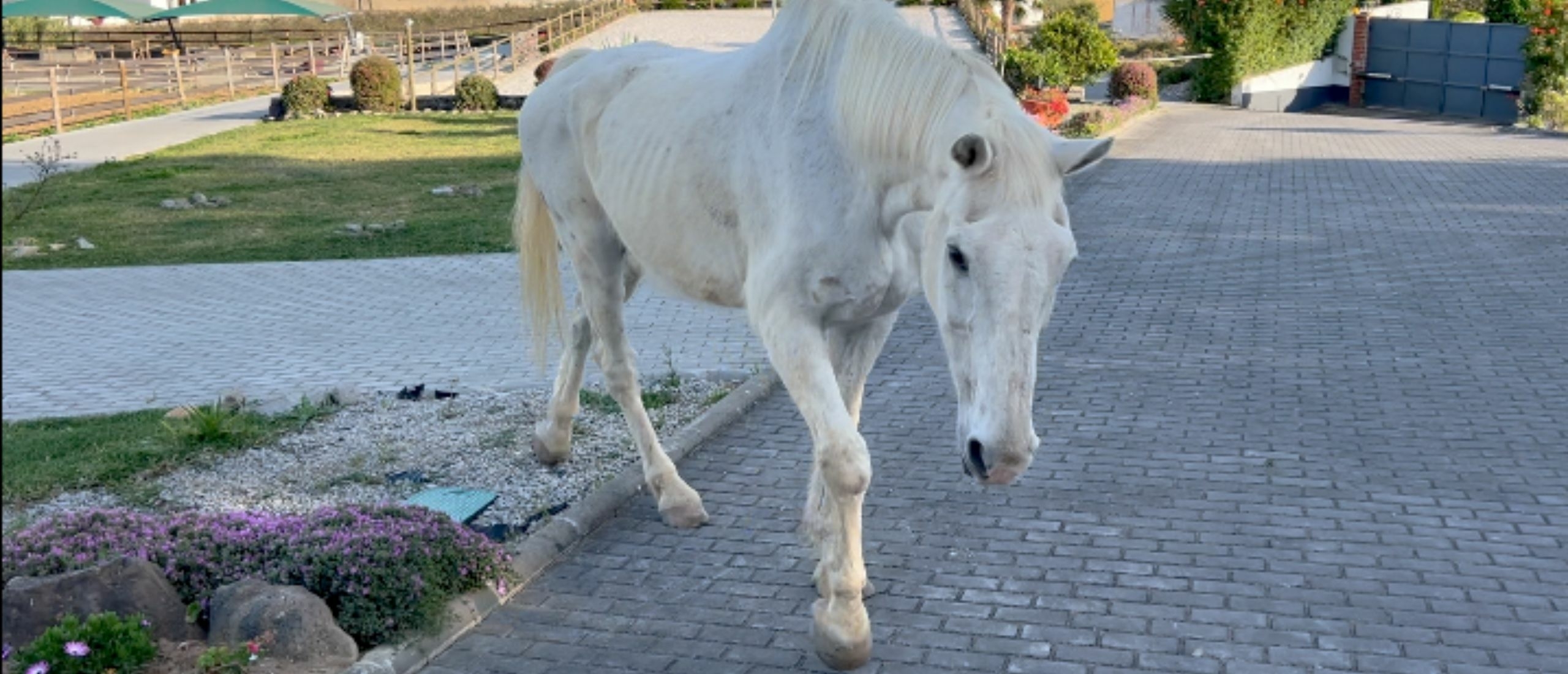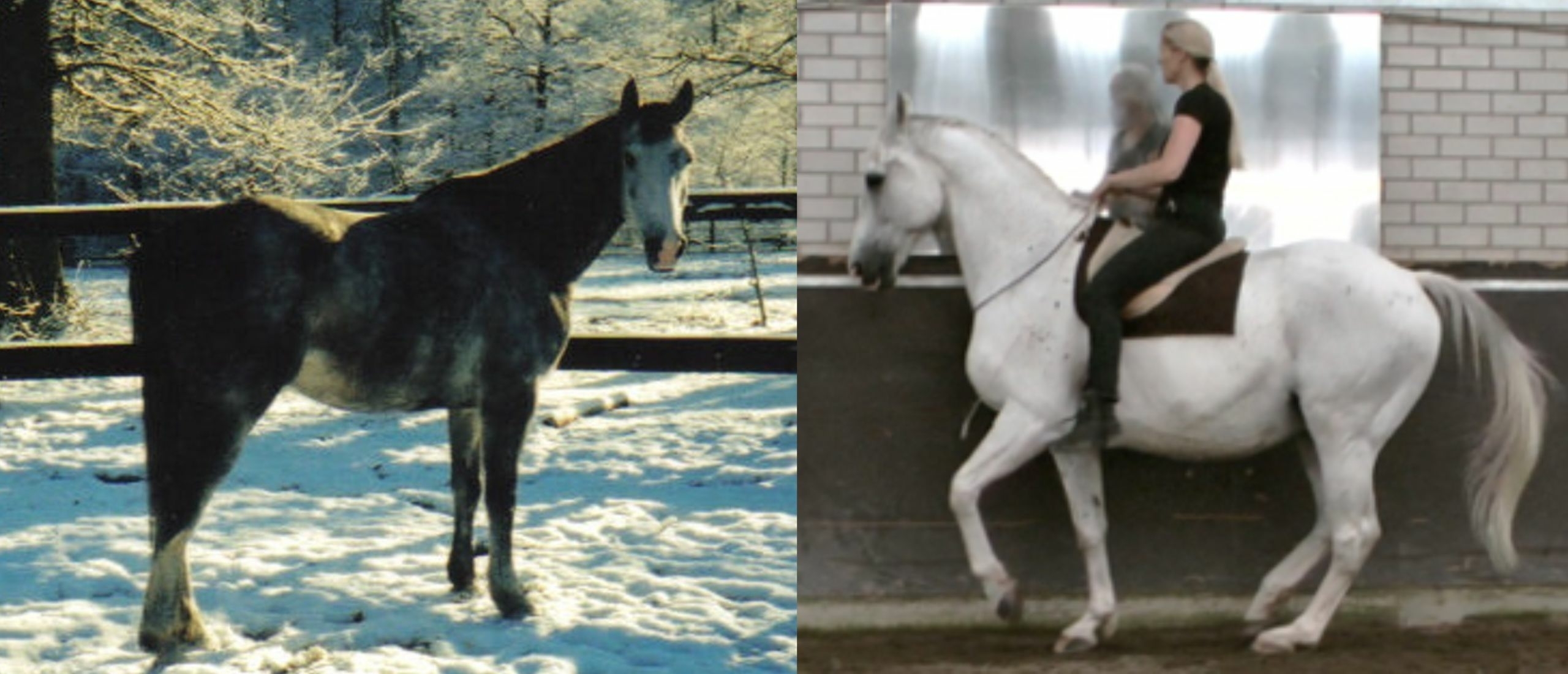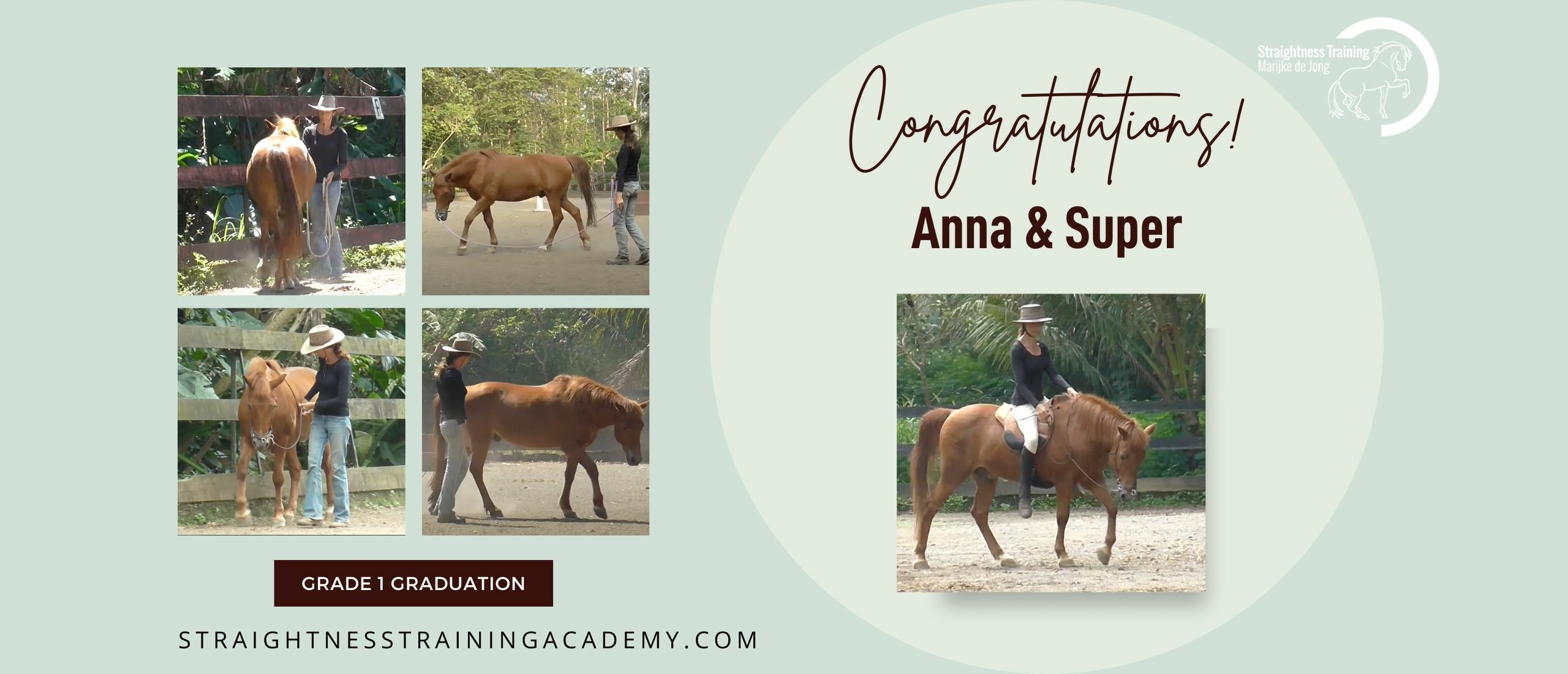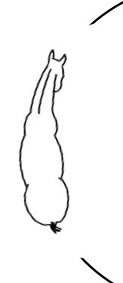 The first key of Straightness Training is the lateral bending. With lateral bending, I mean the equal lateral bending of the body. By stretching short muscles and contracting long muscles, we teach the horse to bend laterally to both sides.
The first key of Straightness Training is the lateral bending. With lateral bending, I mean the equal lateral bending of the body. By stretching short muscles and contracting long muscles, we teach the horse to bend laterally to both sides. 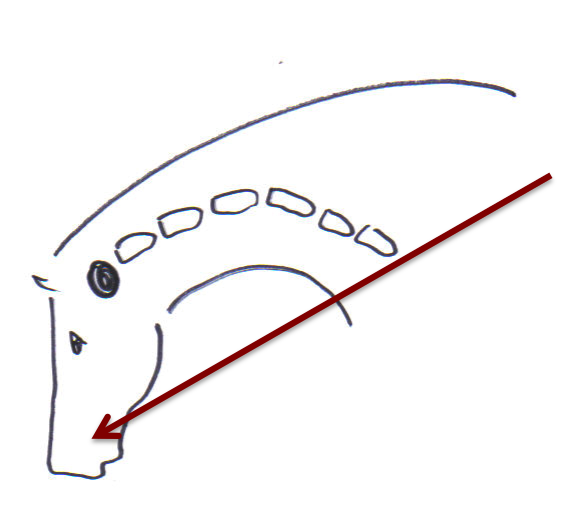 The second key is the forward down tendency of the head and neck. At a standstill, we can ask the head and neck into a forward-down position. In movement, the forward-down tendency will be the result of the lateral stretching of key 1. By stretching the outside of the body, the back muscle on that side lengthens and a long back muscle cannot keep the head of the horse up, causing the horse to lower its head into a forward-down position.
The second key is the forward down tendency of the head and neck. At a standstill, we can ask the head and neck into a forward-down position. In movement, the forward-down tendency will be the result of the lateral stretching of key 1. By stretching the outside of the body, the back muscle on that side lengthens and a long back muscle cannot keep the head of the horse up, causing the horse to lower its head into a forward-down position.  The third key is stepping under of the inside hind leg. Correct lateral bending engages the inside hip, causing the inside hind leg to step towards the center of mass. The forward-down movement of the horse makes the hind leg swing even more forward.
The third key is stepping under of the inside hind leg. Correct lateral bending engages the inside hip, causing the inside hind leg to step towards the center of mass. The forward-down movement of the horse makes the hind leg swing even more forward.Now, why are these three keys important?
A horse can not easily move with a stiff back and when he can’t bend to both sides it's difficult to turn. When he doesn’t support his body weight with the hind legs, it mainly has to be done by the fragile front legs, which in the long term is not a healthy thing. So when a horse is able to bend to both sides, to relax the back muscles and to support his body with the inside hind leg, he’s in a much better position to carry us as a rider.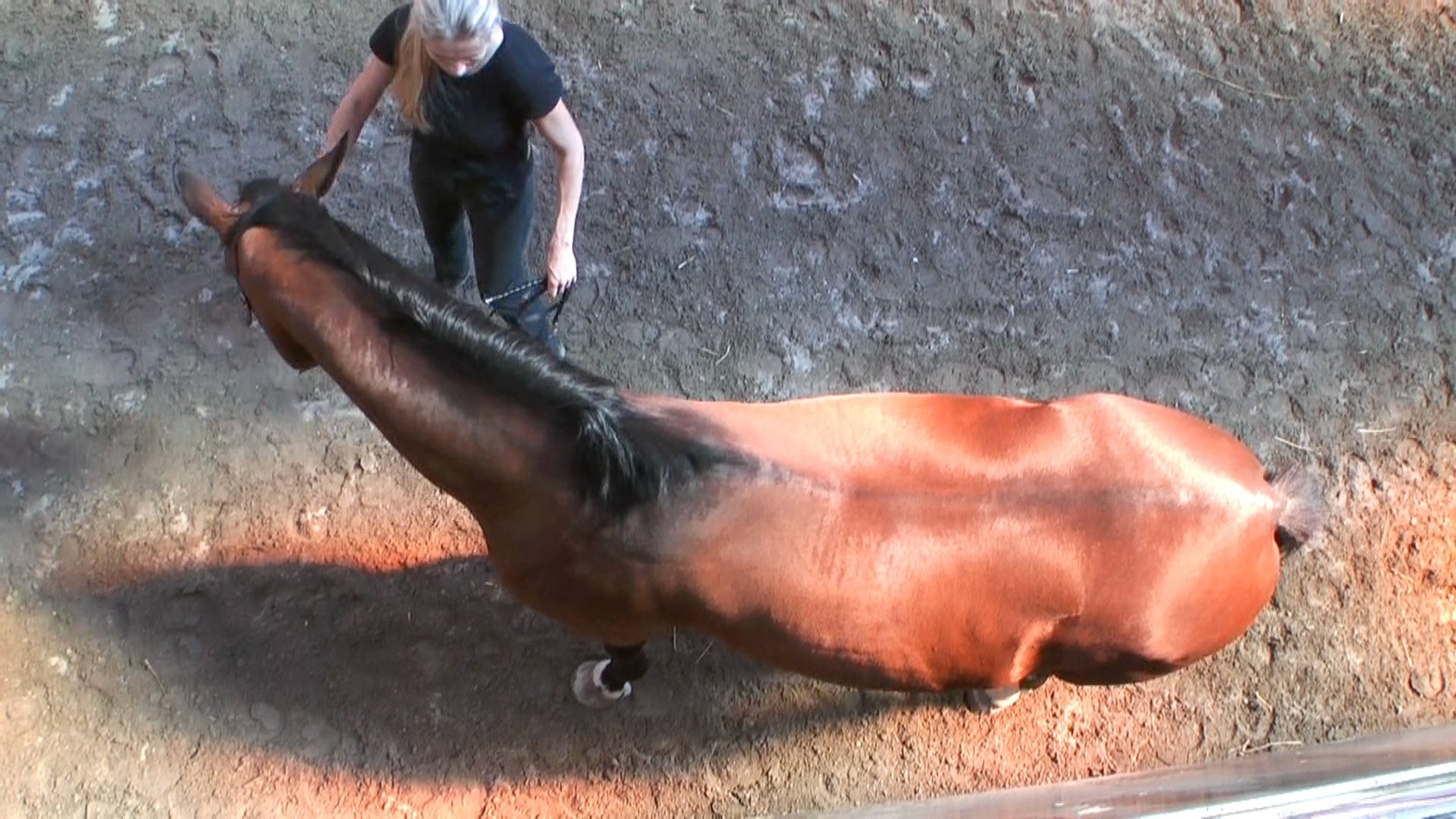
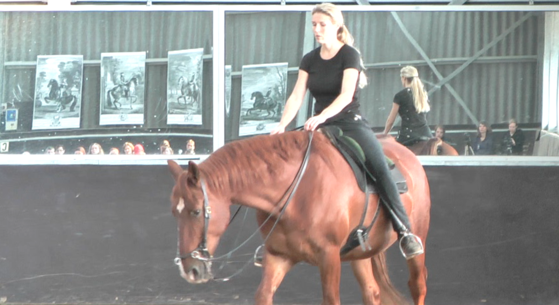
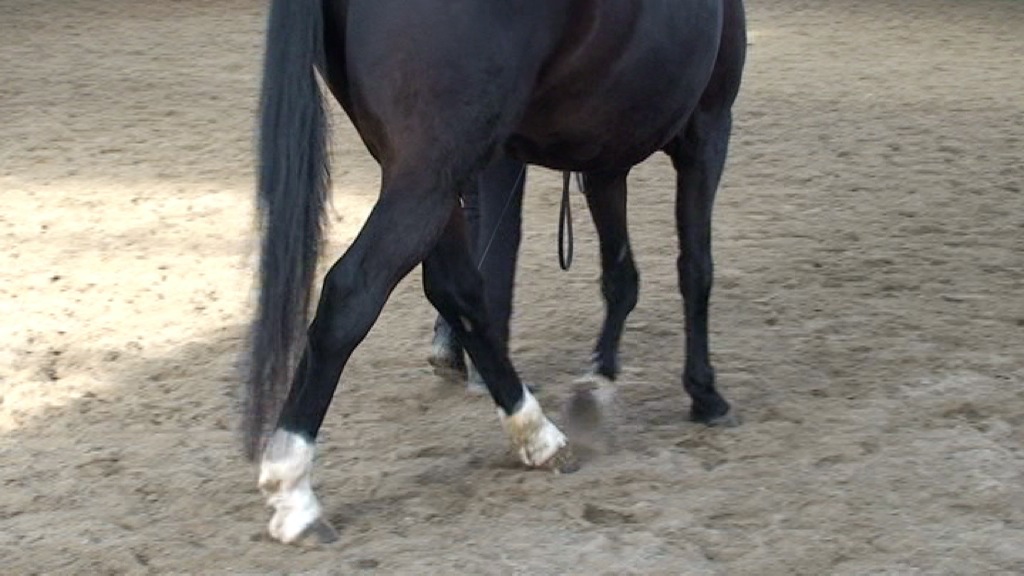
Connection between the three keys
The three Straightness Training keys are closely connected:
- The lateral bending relaxes the long back muscle, making the head of the horse stretch forward-down. On the other hand, a horse with a high head and neck cannot bend laterally because of the stiffness in his back.
- The lateral bending brings the inside hip of the horse forward, making the hind leg step under the center of mass. And the forward-down tendency of the horse activates the hind leg to swing further forward towards the point of mass so the hind leg makes a bigger step forward. Activating the stepping under of the inside hind leg will, on the other hand, improve the lateral bending.
So the first three keys are closely connected. One cannot exist without the others and the three keys must be trained in harmony.
That’s why I use the term ‘LFS’ to focus on these three keys as a unit during Straightness Training.
Now there are three more additional keys. If you want to find out more:
Join My Free Training
Jump on over to my free training were you get a three-step process for implementing Straightness Training in your training sessions right now. Watch two videos and download your free eBook about the ST Exercises which will help you put the information into action right away:



